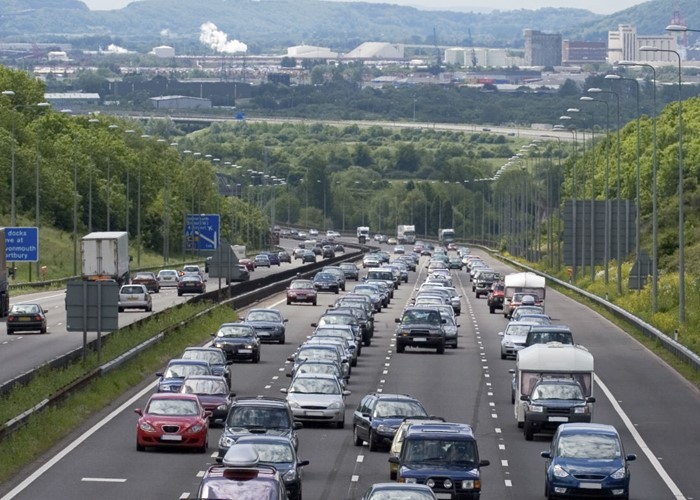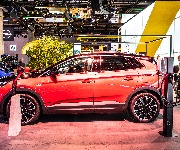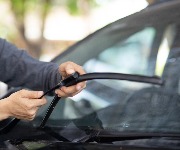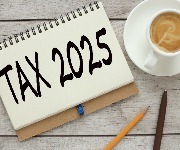The cheapest cars to run

For years, Japanese cars have dominated best-value charts for running costs. But that's no longer the case.
Costing out a car is far more complicated than simply gazing at a price tag.
It may be the main outlay, but with fuel costs soaring and insurance premiums rising, the amount you pay for the vehicle is just the start of an expensive journey.
What Car? magazine has put together a chart of the best-value cars to run over three years. Let's see what comes out on top...
Best value cars
The magazine picked out the best value car across ten categories by crunching the data for servicing, insurance, road tax, fuel and depreciation. This figure was then coupled with a ‘What Car? target purchase price’ – this is the achievable discounted price the magazine has haggled on every car. If a dealer won’t match this target price, What Car? will put the buyer in touch with someone who will.
Historically, Japanese car models have dominated this chart. However the latest data shows that German makes now offer the best three-year value for a majority of car categories, with Volkswagen and BMW featuring prominently.
Here’s how the figures break down:
|
Car category |
Vehicle |
What Car? target price |
Three-year cost |
Total cost (after three years) |
|
City car |
Hyundai i10 1.2 Classic |
£6,995 |
£8,126 |
£15,121 |
|
Supermini |
Ford Fiesta 1.25i Edge 3dr |
£9,354 |
£11,125 |
£20,479 |
|
Small family car |
Skoda Octavia 1.4S |
£11,222 |
£13,428 |
£24,650 |
|
Family car |
VW Passat 1.6 TDI 105 S |
£18,506 |
£15,962 |
£34,468 |
|
Executive car |
BMW 5 Series 520d SE |
£27,954 |
£21,268 |
£49,222 |
|
Estate car |
VW Golf Estate 1.6 TDI 90 S |
£17,324 |
£14,228 |
£31,552 |
|
MPV |
Renault Grand Scenic |
£16,646 |
£15,857 |
£32,503 |
|
SUV |
BMW X3 2.0d SE |
£30,917 |
£20,256 |
£51,173 |
|
Coupe |
VW Scirocco 1.4 TSI 122 |
£18,740 |
£15,763 |
£34,503 |
|
Convertible |
Mini One Convertible 1.6 |
£15,062 |
£13,409 |
£28,471 |
Source: What Car? Magazine
As you can see, five of the top ten cars are from German manufacturers with VW winning the best-value family car, estate and coupe and BMW emerging top in the best-value executive car and SUV.
What Car? said that while VW’s winning family car, the Passat, had a hefty initial price tag, in the long-run the model’s good fuel economy and low road tax meant it costs less than many rivals. For a smaller family car, the magazine pointed to the Skoda Octavia. The vehicle is over £7,000 cheaper initially than the Passat at £11,222 and had a three year cost of £13,428.
The winning BMW SUV, the X3, also triumphed at the 2012 What Car Awards. The magazine praised its frugal engine and classy cabin interior.
The Hyundai i10 – winner in the city car category – is the cheapest car in the table, both for the initial price tag and running costs. What Car? said the model had accurate steering, was quick around town and had reasonable insurance, good road tax and high fuel economy.
The Ford Fiesta Edge came out top in the Supermini category. What Car? said there were “few superminis that rival the Fiesta” and praised the model’s great performance, practicality and sub-£10,000 price-tag.
Cheap and not-so cheerful
What Car? also advised car buyers to be wary of some cars which have a low price tag, but a hefty three-year cost. They singled out the Perouda Myvi 1.3 SXI as a model with a low target price of £6,999 but a high level of depreciation – the car loses 75% of its value over three years.
The magazine also said the Proton Satria Neo 1.6 GSX may cost less than a Fiesta initially - it has a target price of £7,867 – but over a three-year term, will cost the same as the Ford.
In the MPV category, What Car? said the Kia Sedona would cost more than £2,000 more over three years than the Seat Alahambra. Initially, the Kia is just under £2,500 cheaper than the Seat. A cheaper MPV again is What Car?’s best-value winner: the Renault Grand Scenic. The model has a target price of £16,646 and a three year cost of £15,857.
Cutting motoring costs
Outside of picking the correct car, here a few more ways to cut the cost of motoring:
Shop around for fuel
Make sure you sniff out the cheapest petrol prices when filling up your tank. Check www.petrolprices.com to pinpoint the best value stations. Try not to fill up at motorway service stations. Prices here are far more expensive than regular forecourts.
Loyalty cards and offers
Take advantage of as many promotions and loyalty deals as possible. Supermarkets will often give away money-off vouchers for petrol when you spend a certain amount in-store. Alternatively, if you regularly fill up at a specific station, get hold of a loyalty card – I’ve rounded up the best deals in this article.
Cashback or reward cards
Another useful bit of plastic for any driver to have in their wallet is a cashback credit card. These deals will pay you a percentage back of whatever you spend. But if you do get hold of one of these cards, make sure you clear off the bill in full every month, as if you miss a payment, you’ll quickly find interest charges eating into your accrued cashback.
American Express and Capital One currently have two of the best deals on the market with cards offering 5% cashback on purchases across the first three months. Head over to our credit card comparison centre for a rundown of all the best deals.
Car pooling
If you regularly drive to work on your own and have colleagues that live nearby, forming a car pool and sharing the trips could drastically cut petrol costs and reduce wear and tear on your car. Check around the office for other lone-travellers or get onto a website like Liftshare.
Stamp out bad driving habits
Accelerating quickly, braking suddenly, changing gear too late and failing to keep your tyres properly inflated will all increase your fuel consumption. Keeping unnecessary items in your car will also impact on the amount of petrol you use.
Car insurance
The key way to cut your spend on car insurance is to keep shopping around every year and never let your policy renew automatically. Loyalty doesn’t pay in the world of motor cover.
Have a read of this article for 24 further ways to slash the cost of your car insurance.
More: Five ways to get the best new car deal | AA Drivesafe: The little black box that will cut your car insurance bill
Most Recent
Comments
-
Depreciation is a double edged sword. While a low residual value is bad news for someone buying brand spanking new, it is good news for the millions who always buy second hand, oops, pre-owned... I've just purchased a four year old Mondeo for less than a quarter of its original cost new. While the original owner has seen his asset depreciate considerably, I've cadged a bargain. Also, think of all those cars which would normally be out of our reach, such as top notch Mercedes, which can cost £70,000 brand new, but fetch £15,000 after only four years of age. I can't afford £70,000, but could certainly stretch to £15,000, if I really wanted to. And that is another point worth noting. If you are prepared to spend £18,000 on a brand spanking new car, why not buy something that is a few years old, and get a lot more spunk for your money. Of course, someone has to spend the money buying brand new so that the rest of us can pick up a bargain later on. Then again, if people didn't buy brand new, maybe the motor companies would reduce the ridiculously HIGH prices they currently charge for the privilege of driving their latest models.
REPORT This comment has been reported. -
HMRC rates are 45p per mile now and I presume (knowing Mr Tax Man) that their calculations are thought through..... So 40p a mile is good value ;o)
REPORT This comment has been reported. -
The costs of driving vary according to the driver, of course, but when you work it all out, it's frightening. Cars depreciate at a rate inversely proportional to their desirability, but an average, rule-of-thumb is about 18% per year. Fill in the figures yourself. Value of car at purchase Year of purchase Year of sale (intended) Current value.. derived from years owned so far, devalued from purchase price at 18% for each year Miles per year Miles per gallon Cost per litre Road tax Insurance MOT Maintenance (Don't forget to factor in the occasional set of tyres etc.) Expected sales price - calculated from years or ownership, devalued from purchase at 18% per year Total expected devaluation - calculated at 18% per year Annual standing cost = devaluation / years owned + tax + insurance + MOT + Maintenance Annual fuel cost = miles per year / MPG x cost per litre x 4.546 (converts gals to litres) Total Annual cost = Annual standing cost + Annual fuel cost Total Monthly cost = Total Annual cost / 12 Fuel cost per mile = MPG / cost per litre x 4.546 Total cost per mile = Annual fuel cost / Miles per year (averaged over period of ownership I bought my car for £4,700 in 2010, and if I assume a sale in 2015, driving 6000 miles per year with insurance of £400 maintenance of £400, tax at £100 and getting 52 MPG, it works out at almost 40p per MILE. Ouch!
REPORT This comment has been reported.
Do you want to comment on this article? You need to be signed in for this feature









01 March 2012